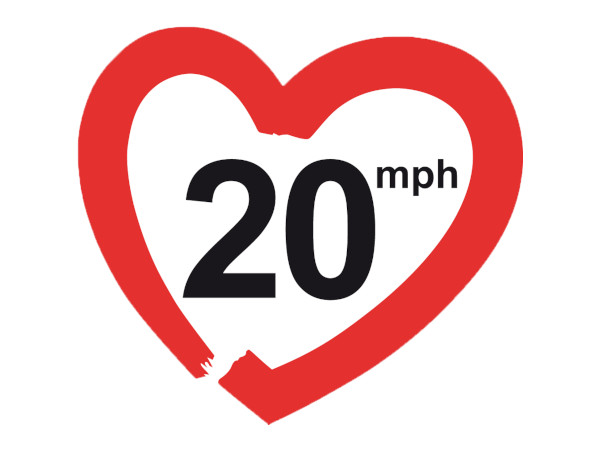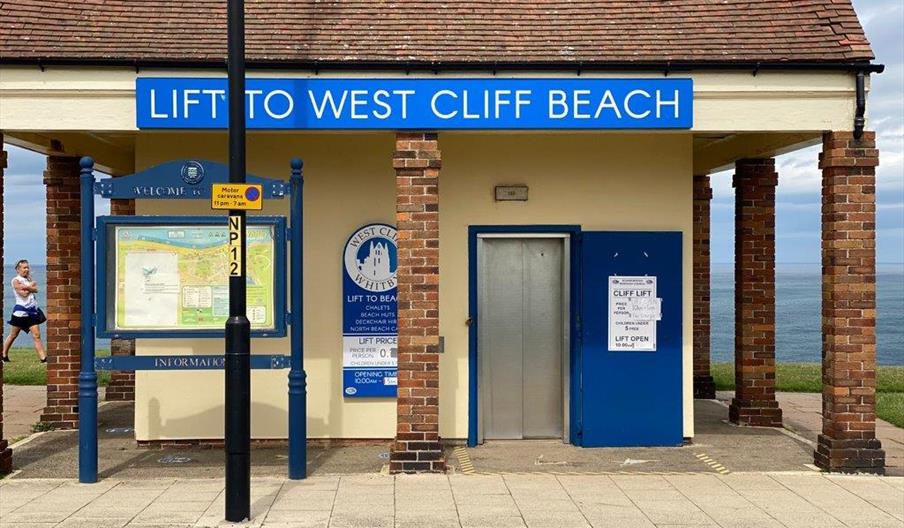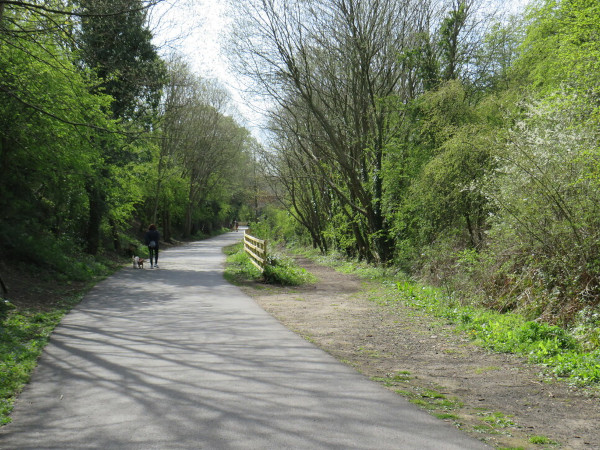On 4th July at an executive meeting of North Yorkshire Council (NYC) a report was provided into the idea of provision of 20mph speed limits in the county, and its recommendations subsequently approved by that committee. NYC already had a series of key rules that they would apply before deciding if a road merited a 20mph speed limit, as mentioned in our 20mph campaign page. Picking apart this report, there are two main aspects to consider.
- Whether default 20mph for the county should be supported by NYC
- How to implement 20mph schemes across the county
Default 20mph for the county
NYC has always been against a default 20mph philosophy. This latest report is simply continuing along this path (point 7.3).
The scientific data regarding road safety of vehicle speed of 20mph .v. 30mph is very clear, as is data on emissions, pollution, road noise, and so on. From a purely road safety, public health and quality of life perspective the policy decision should be clear, and in the Whitby and District area all GP surgeries are supportive of default 20mph, as are the majority of educational facilities. No fact-based argument is presented (by NYC in their report) against it, just a seeming “we don’t want to be dictatorial”, even though consistent public surveys show strong support for default 20mph, and the fact that more than 50% of the resident population of the county are covered by votes for default 20mph.
20mph implementation
Leaving aside whether there should be a default 20mph policy for the county, it should be stated that a discussion on how to implement 20mph in particular areas is welcome. All residential road systems are not alike, and the associated measures needed to encourage lower speeds will differ from place to place. Sign only schemes have indeed been shown to be effective in many areas. That said, recognising that sign-only schemes will not necessarily result in much lower speeds in all areas is a reasonable conclusion, and so to obtain maximum benefit from a 20mph implementation, utilising more measures as appropriate makes sense. This will be more expensive than simple signage only, clearly.
The focus in the report is seemingly primarily on “around schools, and in areas of high footfall”. Do children only walk / cycle near to their school? Do they live very close to their school ? The answer is clearly no, and most road collisions involving children do not actually happen near schools. So you provide a limited 20mph zone near schools and in town centres, so what? What about in the residential area where they live, and want to ride their bike? That likely doesn’t qualify under the vague umbrella of “high footfall”. The impact of very limited implementation suggested will be minimal. What about elderly people, who naturally have slower reactions and where road collisions have more impact? Don’t they warrant lower speed limits around the areas where they typically live? In Whitby, what about around Marton Court, Kirkham Road etc? that area has many vulnerable road users. Concentrating on just a few areas, based on some tight condition, makes little sense.
Key Rules for 20mph
NYC uses KSI data, as well as whether the average vehicle speed is below 24mph already (and a few other rules), to determine if 20mph is appropriate.
As has been stressed to NYC in the past, KSI data does not tell the whole story. It is clearly only reported incidents, and it doesn’t include near misses. It doesn’t make allowance for the perception of the person to road danger. What if particular roads have many near misses, will that area miss out due to the current criteria?
Having to have average speeds below 24mph? If the average vehicle speed is already below that then what are people requesting the reduction for? The process that the public are involved in is about making a town / village more pedestrian / bicycle friendly. If they request a residential area be made 20mph it is because there is a speed problem. NYC will be undertaking a review (point 7.4.2) supposedly looking at where 20mph is needed when the average speed is above 24mph, but there is no timescale attached.
Health Impact
The residents of this county have been told that public health will have a far greater impact on decision making within the unitary NYC. If that was the case, the criteria for 20mph would have changed to reflect the major health benefits of active travel, and the facilitation provided by lower vehicle speeds (and hence safer environment). The fact that all GP surgeries in Whitby district have expressed support for default 20mph and increased active travel ought to be a clear message that NYC should be acting on. NYC are already well aware that on the coast life expectancies are amongst the lowest in the whole county. So we are still waiting to see this fresh “emphasis on public health”.
We are told that the Public Health department of NYC supports this report. We find it truly puzzling that such a group do not see any apparent urgency in tackling the health issues present in this county, that 20mph could make a significant impact on. One thing’s for sure, there will be no “active travel prescribing” in this county until there is a change in policy.
Active Travel
The UK Government’s own documentation LTN 1/20 states clearly that you will not get mass uptake of bicycles when you have to have mixed car–bicycle roads, simply because the majority of potential users do not feel safe until the speed drops to 20mph or below. The NYC key rules for 20mph do not take such into account. The report goes on about slower speeds being necessary for walking / cycling and maybe considering them at implementation (point 7.5), but that’s the limit of it.
Any transport authority with an understanding of active travel and the strategy that NYC have set themselves regarding climate action (which implies 900% uptake in cycling) will understand that they cannot provide bicycle infrastructure across all urban areas (due to road width etc), and to a degree they will need to make use of mixed car-bicycle roads. As a result, any 20mph strategy should allow for the Local Cycling Walking Infrastructure Plan requirements (where such a plan is available) and, where cycle infrastructure is not possible, make areas 20mph to facilitate connecting between cycle infrastructure components. This is not part of the NYC strategy specifically, so all the talk of it being an integrated strategy do not ring true.
The logical conclusion is that the transport aspect of the NYC climate strategy will fail without greater emphasis on applying 20mph on many more areas; the 900% increase in cycling will not materialise while such rules remain in place. And this is setting aside NYC’s lack of track record in actually delivering active travel infrastructure schemes.
Other comments on the report
NYC will now launch a series of reviews, with little timescale definition. This does appear to follow a theme of what has happened in the Harrogate area with endless consultation for active travel schemes, and little action. Being thorough is all well and good with taxpayers money, but that would require an end result, and we don’t foresee timescales for such an end result. In the meantime the health of the resident is diminished due to the inability to walk / cycle safely, with no prospect of when that will be remedied.
Review scope
The report doesn’t define how many “expert views” it has consulted, just mentioning “20s Plenty” (where is the list of consultees and stakeholders?), has not been performed transparently, and the response level to the report from NYC councillors suggests that there are many councillors out of touch with the residents that they represent not replying on an issue that is important to their residents, bearing in mind > 50% of the population in the county are covered by default 20mph requests.
Evidence-based arguments
Being able to understand evidence-based arguments should be a prerequisite of being an NYC councillor (or officer), should it not? We would suggest that this criteria is not currently being met. Several default 20mph schemes were referenced in the report but then not referred to as to the applicability of findings. The Edinburgh study was referenced and effectively sidelined with “North Yorkshire is not like Edinburgh”; well an urban area is an urban area, it would just be about how to implement 20mph that should be the question. The Calderdale case is simply referenced but never referred to (i.e ignored). Why were they seemingly ignored? In a scientific paper if a reference was introduced it would have to be referred to and comments provided as to the relevance (or otherwise) as part of a reasoned argument, to guide a conclusion for example, or via reasoning why it was not applicable in this case. Didn’t some of the referenced studies meet the desired conclusion perhaps? If this had been a peer reviewed report it would never have been approved for publication if that was the case.
Democracy not dictation
Cllr Keane Duncan says “North Yorkshire Council strongly believes in democracy not dictation”. He presumably is implying that by not imposing default 20mph NYC is somehow more democratic and less dictatorial, ok, but the fact that local areas / parishes have requested such default 20mph measures and they are being prevented by NYC, contradicts his statement; the belief in democracy only works if you grant parishes the power, which they currently do not have.
Cllr Duncan also stated that default 20mph with signage would cost “upwards of £10m“. This contrasts directly with the evidence from every implementation of default 20mph with signage which costs £3-5/head of population, hence around £3.5m for North Yorkshire. Why does Cllr Duncan think that NYC is utterly inefficient at applying a basic signage scheme? because that is the only possible interpretation of adding a multiplier of 3 to a widely established costing. Hardly a ringing endorsement of NYC staff.
The report also states “In all circumstances, there should be community support for the introduction of 20mph limits and zones, especially from the local member” yet there evidently is community support by the fact that parishes have voted clearly in favour. Reminder, a “local member” (i.e NYC councillor) is supposed to be representing those residents, and so if the local parish has voted in favour that local member should be in support also, unless, of course, they are not fulfilling their remit and just following political party or personal aims (which would leave them open to being removed at the next election).
What for Whitby and District?
This issue is particularly pertinent in our district where Whitby Town Council, Lythe Parish Council and Mickleby Group Parish Councils have all voted for default 20mph to overcome specific problems in their areas. We also have schools throughout the district with similar problems and supporting our 20mph and active travel campaigns. The health impact of lack of activity has led all GP surgeries throughout the district to back the need for default 20mph and more active travel. Does this not constitute “the majority” in the NYC mindset?
We have the merger of the 2 secondary schools in the district happening in the next 12 months, which will mean that 400 children (11-16) will have to be able to walk safely along Helredale Road (30mph, but not obeyed), New Bridge (40mph), and Mayfield Road (busiest road, inadequate crossings) just to get to school, and still no transport assessment of that specific problem has been carried out.
The coastal area, of which this district is part, has the biggest health issues and lowest life expectancies in the whole of the county, and addressing these health problems will only come with addressing the population’s activity profile. To achieve that we need default 20mph implementing with some urgency.
Why the 4 NYC councillors for this district are seemingly not willing to be vocal about supporting such an issue you would have to ask them. They are, thus far, uncommunicative and seemingly of the opinion that they have more important issues to address (what could be more important than the health of the residents who live here?!), but then that likely highlights why this district has some of the lowest active travel levels in the whole county.
Will NYC ever provide this area with 20mph to help overcome the significant problems that we have? or will it be a case of health disparities across the county continuing ad infinitum?
For reference, the Whitby and District councillors are Whitby West (Cllr Phillip Trumper), Streonshalh (Cllr Neil Swannick), Esk Valley and Coast (Cllr Clive Pearson), and Danby and Mulgrave (Cllr David Chance). Email them what you think of this situation





2 thoughts on “NYC’s continual resistance to Default 20mph”
Hi Andy. Sust read your reaction to the soppy NYC response to ’20s Plenty’. How about providing the names and email addresses of our 4 County Cllrs, and our MP? Much more chance of our contacting them if we can see WHO to email and HOW!
Suggest we should ‘agree’ with their Specific Areas approach to 20s Plenty, and suggest Seaside resorts with high proportion of elderly (Whitby is c60% over 60s. Sue B has the figures).and NYMNP and YDNP which have far more walkers and cyclists on minor country roads than most of the county.
Good Luck!
Thx Niall, NYC cllrs for Whitby and District now appended to the article with emails.
Comments are closed.